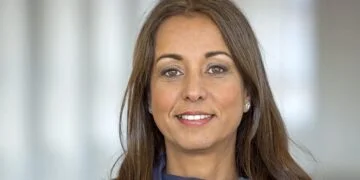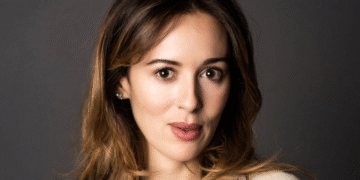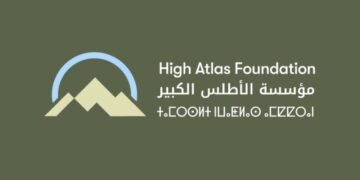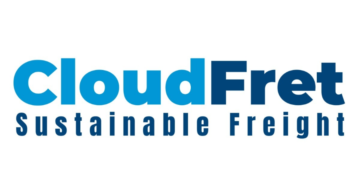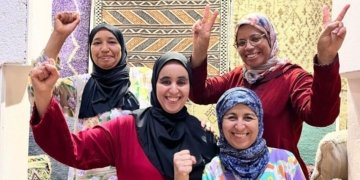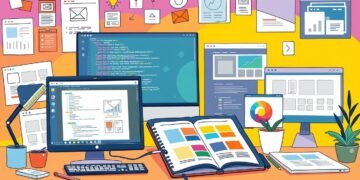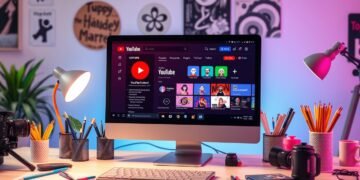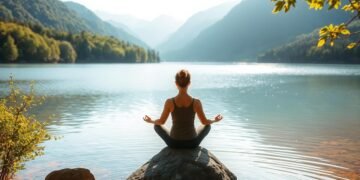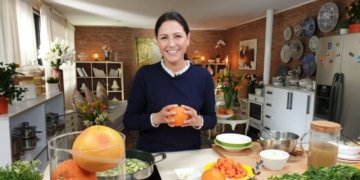Have you ever wondered how a single country can blend African, Arab, and European influences so seamlessly? Morocco’s rich heritage and traditions make it a fascinating cultural crossroads. With its strategic location, the country has absorbed elements from Berber, Arab, French, and Spanish civilizations.
Nearly 99% of Moroccans practice Islam, yet the constitution guarantees religious freedom. This balance shapes daily life, from the call to prayer echoing through cities to the warm hospitality shared over mint tea. The mix of Arabic, Berber, and French languages adds another layer to its vibrant identity.
From colorful festivals to flavorful cuisine, every aspect of Moroccan culture tells a story. Whether it’s the rhythmic beats of Gnawa music or the intricate designs of a handwoven rug, tradition thrives alongside modernity. How does this fusion shape the daily lives of 34.8 million people?
Key Takeaways
- Morocco blends African, Arab, and European influences.
- Islam plays a central role, with 99% of the population being Muslim.
- Arabic and Berber are official languages, while French is widely used.
- Cultural traditions include music, festivals, and shared meals.
- Hospitality and community are deeply rooted in daily life.
The Historical Tapestry of Moroccan Culture
Three millennia of history have woven Morocco’s vibrant cultural fabric. Its heritage reflects conquests, trade, and resilience, blending indigenous traditions with foreign influences. Today, this fusion defines everything from architecture to daily rituals.
Berber Roots and Arab Influences
The Berbers, North Africa’s earliest inhabitants, left an indelible mark. Their 3,000-year-old traditions survive in handwoven rugs, silver jewelry, and Tamazight dialects. Dynasties like the Almoravids and Merinids championed Berber arts while adopting Islamic ideals.
Arab arrivals in the 7th century introduced transformative elements. Ornate mosques and madrasas, like the Saadian Tombs, showcase Islamic architecture. Arabic became the lingua franca, yet Berber languages endure, symbolizing cultural pride.
French and Spanish Colonial Legacies
France’s 20th-century protectorate reshaped cities and education. Wide boulevards in Casablanca and French fluency reflect this era. Meanwhile, Spain’s hold over northern enclaves like Ceuta left a distinct Mediterranean imprint.
After 1956 independence, Morocco harmonized its layered history. Modern cities embrace Berber motifs, Arab calligraphy, and European infrastructure. This synthesis honors the past while forging a unified identity.
Hospitality and Social Customs
The warmth of Moroccan hospitality is legendary, rooted in centuries of tradition. Visitors are treated like family, whether sipping mint tea in a Marrakech riad or sharing couscous in a rural village. These customs reflect deep values of respect and unity.

The Art of Moroccan Tea Rituals
Mint tea, dubbed “Moroccan whiskey,” is a symbol of welcome. The ceremony begins with green tea, fresh mint, and sugar steeped in a silver pot. Pouring from a height creates froth, a sign of skill and generosity.
Three servings are customary, each with a unique meaning: bitter like life, sweet like love, and gentle like death. This ritual strengthens community bonds, turning strangers into friends.
Guest Etiquette and Community Bonds
Greetings often involve a three-kiss cheek gesture among same-gender friends, paired with handshakes. Dining follows strict customs: eat with the right hand, say “Bismillah” before meals, and leave no crumbs—a nod to hshuma (avoiding shame).
In villages, guests might be honored with a lamb tagine or honey-drenched pastries. Shared meals, from street food to festive feasts, underscore Morocco’s belief that food tastes better together.
Religion in Daily Life
The call to prayer echoes through Moroccan cities five times daily, marking time with spiritual rhythm. Islam’s influence extends beyond religion, shaping social norms, business hours, and even architecture. From the Atlas Mountains to coastal towns, these practices bind communities together.
Islamic Practices and Prayer Times
The muezzin’s voice rings from minarets at dawn, noon, afternoon, sunset, and night. Each prayer aligns with the sun’s position, pausing daily activities briefly. In cities like Fez, shops close for 15 minutes as worshippers gather.
Mosques feature qibla walls pointing toward Mecca and ornate geometric designs. Friday’s Jummah prayer draws crowds, turning mosques into social hubs. Rural areas often observe stricter routines, while cities blend modernity with devotion.
Ramadan Observances and Cultural Impact
During Ramadan, fasting from sunrise to sunset shifts work schedules. Streets buzz after dark with night markets selling dates, soups, and ftoor meals. Families break fast together, starting with water and figs—a tradition dating centuries.
Eid al-Fitr ends Ramadan with feasts of lamb tagine and honey-drenched pastries. Children receive new clothes, and charity drives spike. These practices highlight Morocco’s blend of faith and communal joy.
Insights into Moroccan Lifestyle: Traditions and Daily Rhythms
Morocco’s heartbeat pulses differently between its bustling cities and quiet villages. In urban areas, high-rises and tech hubs dominate, while rural valleys cling to centuries-old way life. Yet both worlds share a deep respect for family bonds and cultural roots.

Urban vs. Rural Lifestyles
Casablanca’s financial district buzzes with cafés and $800/month apartments. Meanwhile, Atlas Mountain villages thrive on $150 monthly incomes and handwoven crafts. This gap extends to education—urban areas boast 90% literacy, while rural zones lag at 52%.
Gender roles also diverge. Women run family bakeries in Fez’s medina, but rural Berber women often manage livestock. Tech adoption highlights another split: 4G blankets cities, yet some villages rely on weekly souks for trade.
Family Meals and Shared Moments
Sunday lunches unite generations over steaming couscous—a meal symbolizing unity. Grandparents share stories while children learn recipes passed down for centuries. Even in fast-paced urban areas, this ritual anchors daily life.
Multi-generational homes are common. Elders teach traditions like tea ceremonies, ensuring the way life endures. From bustling markets to quiet terraces, family ties flavor every meal and moment.
Moroccan Cuisine: A Feast for the Senses
The aromas of saffron and cumin fill Moroccan kitchens, telling stories through every dish. Moroccan cuisine blends Berber, Arab, and Mediterranean flavors into vibrant food traditions. From slow-cooked tagines to bustling street stalls, each bite reflects the country’s rich heritage.
Tagine, Couscous, and Street Food Delights
The iconic tagine gets its name from the clay pot that cooks meats and vegetables over low heat. Women traditionally prepare it with 27-spice ras el hanout blends, while men craft tanjias in communal hammams. This method locks in flavors, creating tender dishes like lamb with prunes.
Friday lunches feature couscous topped with caramelized onions and chickpeas—a meal symbolizing unity and faith. Locals consume 200g of bread daily, using it to scoop communal plates. Street vendors in Marrakech’s UNESCO-listed Jemaa el-Fnaa square serve msemen pancakes and snail soup, offering quick, flavorful bites.
The Social Significance of Communal Dining
Meals are shared from a single plate, reinforcing family bonds. Bread acts as both utensil and plate, following etiquette like eating with the right hand. Saying “Bismillah” before meals honors religious and cultural values.
Breakfasts showcase argan oil drizzled over bread with Amlou, a sweet almond spread. These rituals turn food into moments of connection, whether in city cafés or mountain villages. Every dish invites participation, making Moroccan cuisine a celebration of togetherness.
Modern Morocco: Balancing Tradition and Change
Morocco’s evolving identity bridges ancient customs with 21st-century innovation. In cities like Casablanca, glass towers rise beside labyrinthine medinas. This duality defines daily life—where 50,000 French expats sip espresso in coworking spaces, while artisans hammer brass lanterns nearby.
Expat Life and Cultural Adaptation
French and English schools cater to expat children, blending language immersion with Moroccan practices. The tech sector fuels 6.5% GDP growth, drawing talent to Rabat’s startup hubs. Renewable energy projects, like Noor Ouarzazate’s solar plant, marry tradition with sustainability.
Yet adaptation goes beyond business. Expats learn to pause for mint tea meetings—a ritual that defies clock-time efficiency. Shared meals and weekend hikes to Atlas villages ease cultural transitions, proving Morocco’s warmth transcends borders.
Festivals and Contemporary Arts
The Gnawa Festival electrifies Essaouira with 500,000 visitors yearly. Traditional trance music now mixes with DJ sets, a nod to global tastes. Meanwhile, Marrakech’s Biennale showcases provocative installations in 14th-century palaces.
Hip-hop artists like Muslim weave Amazigh lyrics into beats, redefining street culture. These festivals and arts scenes prove Morocco honors its roots while embracing change—one drumbeat or brushstroke at a time.
Conclusion
Morocco’s eight UNESCO sites stand as living museums of its layered past. Today, 12 million annual visitors explore this heritage, while sustainable tourism initiatives protect sacred spaces like the Atlas Mountains.
The tension between traditions and change is palpable. Digital nomad visas lure remote workers to Tangier’s cafés, yet Berber elders still teach tea rituals in mountain villages. Festivals like Essaouira’s Gnawa blend ancient music with modern beats.
Visitors can engage respectfully—learning Arabic, sharing meals, and supporting eco-lodges. At its core, Moroccan culture thrives on community bonds and timeless hospitality. Whether through art or argan oil cooperatives, its traditions adapt without losing soul.
FAQ
What makes Moroccan hospitality unique?
Moroccans take pride in welcoming guests with warmth, often serving mint tea and traditional dishes like tagine. Sharing meals strengthens bonds within the community.
How does religion shape daily routines?
Islamic practices, including prayer times and Ramadan, influence schedules. Businesses may close during prayers, and evenings come alive during religious festivals.
What are key differences between urban and rural life?
Cities like Marrakech blend modern amenities with historic medinas, while rural areas maintain slower-paced traditions, focusing on agriculture and tight-knit family ties.
Why is food central to social gatherings?
Dishes like couscous symbolize unity. Families and friends gather around shared plates, turning meals into celebrations of heritage and togetherness.
How do festivals reflect cultural heritage?
Events like Eid al-Adha and local moussems showcase music, dance, and crafts, preserving history while adapting to contemporary influences.
What should visitors know about local customs?
Dress modestly in religious sites, accept tea when offered, and use your right hand for eating. Respecting these gestures deepens connections with locals.

